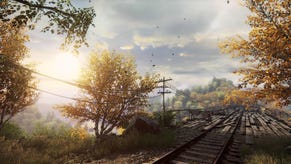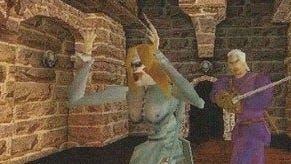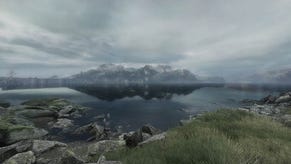The re-engineering of Ethan Carter
Digital Foundry talks to The Astronauts about the transition to PS4 and the move to Unreal Engine 4.
Unreal Engine 3 enjoyed a long, prosperous life on last-gen following its 2006 debut, but the new UE4 has yet to hit its stride in the new console gaming era. We're almost two years into the current generation, but by our reckoning, only five UE4 games are now available on PS4 and Xbox One. Without Epic itself setting the bar this time around, there's the sense that we haven't seen the engine at its best. However, with the release of The Vanishing of Ethan Carter, Polish development team The Astronauts might well be the first studio to deliver on the powerful middleware's latent potential.
On the face of it, the game is a PC port, but Ethan Carter's journey to the PlayStation 4 was longer and more involved than one might expect - after all, the original release was based on the last-gen Unreal Engine 3, an altogether different technology compared to its successor. While the visual quality pushed the boundaries of Epic's ageing tech, The Astronauts actually wanted to build the game using UE4 from the beginning - something that wasn't possible at the time as the engine itself simply wasn't ready. With the move to PlayStation 4, the studio seized the opportunity to move the entire project over to Epic's new platform. This transition would help make the leap to PlayStation 4 easier while simultaneously serving as a trial exercise in using the new tool-set. Now, ten months after its initial release, Ethan Carter has re-emerged on PlayStation 4 - with an upgraded PC version to follow, free to all existing owners of the game.
To give us some idea of the substantial work undertaken in the transition, The Astronauts' lead artist - Andrzej Poznanski - took the time to share his experiences with us, providing valuable insight into the development process. There hasn't been a lot of discussion surrounding UE4 projects on the current wave of consoles, so we were eager to learn more about the capabilities of the engine and the challenges and opportunities in working with it. The technology is clearly highly capable but on a constrained platform like PS4, the full extent of its entire feature-set can't be deployed at will.
"Game development has always been a trade of trade-offs but it has never been as evident as with modern engines and modern hardware," Poznanski tells us. "In Unreal Engine 4 you can have beautiful real-time lighting and shadows everywhere, you can have movie quality rendering thanks to advanced anti-aliasing, beautiful 'bokeh' depth of field and cinematic motion blur effects, you can even have global illumination in deforming environments, but you can't have all of those features, at the same time, in any game design you like."
Unreal Engine 4 is based upon a deferred renderer with a focus on dynamic lighting and physically-based rendering (PBR) - an approach completely at odds with the original design of Ethan Carter and the older UE3. "PBR in UE4 works best with fully or at least partially real-time lighting. With our fully static lighting PBR was problematic, non-PBR textures didn't help either," reveals Poznanski. "We felt that increased realism doesn't fit our game. The slightly surreal feel is what we worked hard to achieve and we don't want to mess with it. So we didn't re-author content much, we mostly adjusted lighting to work well with PBR's energy conservation and made use of more natural light fall-off that UE4 offers."
This unique presentation is primarily the result of its high-quality static global illumination - the resolution of which is high enough to eliminate the need to utilise any form of real-time screen space ambient occlusion. It's interesting to learn that it was necessary to essentially push back against realistic materials behaviour in the lighting system in order to achieve the desired look.
One such example centres on static lightmaps - when originally implemented, specular highlights were completely absent due to the fact that UE4 is designed to use these elements primarily for indirect bounce lighting. Solving this problem required a solution that goes against the principles established by the engine's lighting model. As engine programmer Leszek Godlewski noted, "I've 'fixed' that by adding a forward, fake Phong specular highlight to emissive lighting. I still feel super filthy because of it. It violates the energy conservation principle and uses a non-PBR specular distribution, but the artists were happy with it."
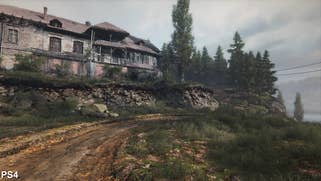

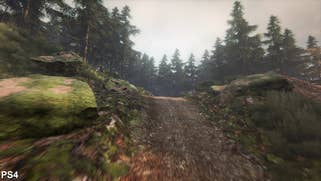


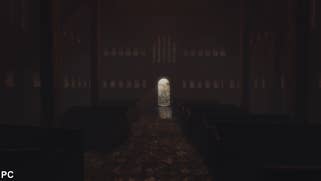
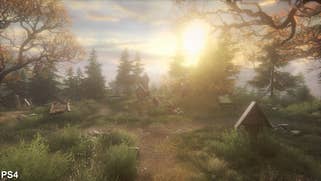
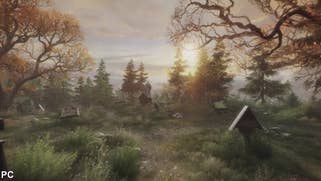
It quickly became evident that the workflow necessary to bring the game to life on the new engine would vary greatly from the typical approach one would take in creating a UE4 title from scratch. Creating new tools and techniques while working with non-standard code paths is a challenging process that can often break things during development. One such example includes the implementation of reflections: support for planar reflections, which the original game used for water, was removed from UE4. Tackling the problem using UE4's toolset, which utilises cube-maps, resulted in inaccurate reflections which then required a hacked solution to fix - something which affects the quality of the reflections in comparison to the original implementation.
Looking at the actual development process on PS4 itself, the Astronauts are unequivocally positive: "It was the best console development experience I've ever had," Poznanski says. "Compared to the previous generation, the current hardware is very well balanced - we didn't encounter any bottlenecks. We didn't need to bend over backwards to utilise full hardware potential, and it was a genuine pleasure to free our minds of PC driver issue worries."
Access to a guaranteed, large amount of onboard memory also helped. One problematic area with the original PC version comes from UE3's notorious asset-streaming system, known for its stutter and pop-in issues, particularly impacting games working with larger environments such as Batman: Arkham City and, of course, Ethan Carter. In comparison, the PlayStation 4 version manages to avoid most (but not all) of the hitches and stutters that occur during exploration.
"While UE4 has a number of under-the-hood changes to ensure smoother streaming, we were able to optimise our content and use PS4's memory in such a way that the streaming engine rarely needs to flex its muscles," Poznanski explains.
It's an interesting approach as data streaming was an essential requirement in the last generation due to the limited amount of memory available on console. On PS4, the increase in memory clearly enables a much larger amount of data to stay resident at any point, eliminating the need for constant streaming. Unlike the PC version, Ethan Carter loads most of its data into memory at startup and, once you reach the main menu, the game plays back in a seamless fashion. That said, there are still instances where we encountered minor hitching while loading certain sound files or triggering specific events.
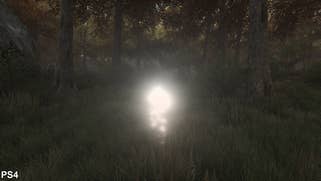
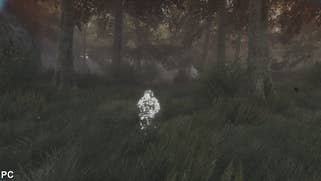
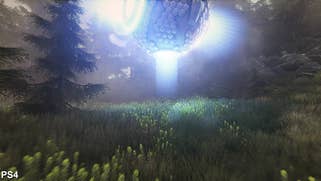
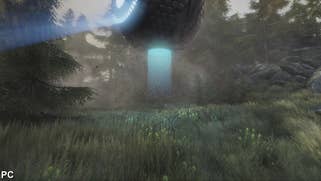
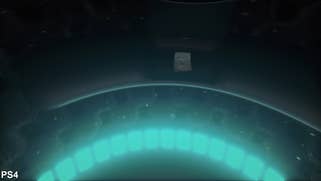
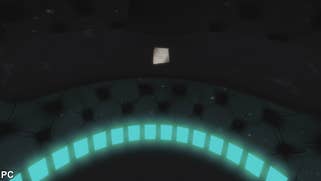
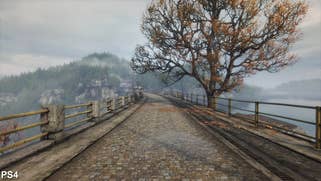
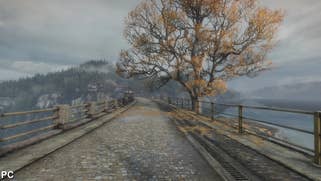
While translating the original vision to UE4 was the primary objective, there are a number of additional visual benefits that come with the new engine. A new, much higher quality motion blur is used, resulting in smoother camera rotation and character movement. High intensity points of light, such as that of the sun, appear different as a result of the new lighting model. This produces a higher white point, which appears richer and more realistic in comparison to the original game. The sun peeking in through the windows of an old church now creeps in realistically through each of the small windows dotting the structure - a visual element completely missing in the original release. Foliage appears sharper and more defined in the distance, shadow fall-off is a little smoother and light-shafts appear more natural. In most areas, the changes result in a subtle, but appreciable bump in quality.
Of course, on the flipside, other UE4 specific elements were tossed aside in favour of solutions preferred by the artists. Image quality is one such area. In its final form on PS4, Ethan Carter operates at a full 1920x1080 with a pass of FXAA anti-aliasing. The results are clean but lack temporal stability on distant objects. Thin rails, edges of static meshes, and complex patterns all exhibit noticeable flicker and shimmering while moving through the world.
Epic's built-in temporal AA solution is impressive but this was deemed too aggressive for the style of visuals on display in Ethan Carter, prompting the search for an alternative. FXAA and SMAA T2x were both considered and while artists preferred the latter option, performance was several times slower than FXAA, explaining its selection. In comparison, we utilised a combination of FXAA and 2x MSAA for the PC captures in this piece, delivering a more stable image overall. However, some areas in the PS4's presentation are comparable with PC at its higher settings - Ethan Carter PS4 features an impressive level of anisotropic filtering, preventing textures from blurring at oblique angles. Low quality texture filtering is a common complaint on current-gen console titles and we wondered what set The Astronauts' work apart.
"We do use high anisotropic filtering, but to be fair to other developers, we didn't need to spend any cycles on AI or destructible environments or weapon shaders," Poznanski says. "There was an insane amount of work behind our game's visuals, and I don't want to downplay that, but I think we did have more room for visual enhancements than some other games."
So we get some hints on what the potential challenges are in utilising high quality anisotropic filtering on console, and at the very least this suggests that there are no barriers (outside of performance) preventing a decent implementation of anisotropic filtering.
However, from our perspective, if there's one element that detracts from an otherwise polished presentation, it is frame-rate consistency. As with a number of other titles released on current generation consoles, Ethan Carter ships with an uncapped frame-rate. This results in a rather variable experience typically ranging from the mid-30s to a full 60fps, depending on where the camera is pointed. Through the majority of the experience, frame-times remain at or below 33ms. With a frame-rate cap in place, this would translate into a very steady 30fps with even frame-pacing.
"I guess we just went through the same thing as the Infamous devs did. Internally, we liked the dynamic frame-rate. It just never bothered us, on the contrary. So we figured we'd just keep it in the final game," counters Poznanski. "But some players prefer a stable frame-rate. We get it. When you get a drop from 60 to 30, it's a drop from great to standard, but it is a drop. And great to standard suddenly looks like standard to not so great. So, even though most players see no issue with the unlock, in the final patch we will simply add the lock option, and might even set the stable 30fps as the default setting."
Despite the focus on PlayStation 4, The developer hasn't forgotten its PC userbase. Sometime in the near future, there are plans to release an update to the PC version of Ethan Carter, carrying over the UE4 codebase with enhancements that favour those invested in expensive gaming kit. Or as Poznanski puts it:
"All the stuff that PC gamers expect, meaning support for 4K, high frame-rates on high-end, definitely lots of GFX options to fine tune, along with GPU driver quirks," he says. "In general the philosophy here is to make sure that if someone has some crazy set-up at home, like three projectors or something, they should be able to bend the game to their will without too much of a hassle. We went above and beyond with the UE3 version, even offering the field of view slider, but as it turned out, there was still a room for more. With the UE4 version we want to make sure it'll be the most flexible version possible."
That said, the move to Unreal Engine 4's deferred renderer is problematic for MSAA - meaning that a feature found in the original UE3 version is no longer available in the upcoming revised version. "We are still tweaking algorithms for our in-house SMAA solution but it's promising already and will most likely be our main solution," Poznanski notes. "UE4 features a really stable temporal AA but it softens everything a bit too much for our taste. It looks incredible with over-sampling, though."

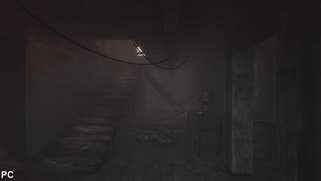
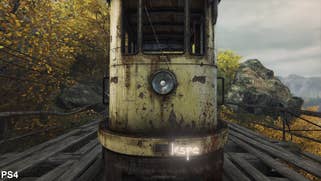

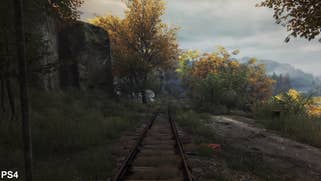
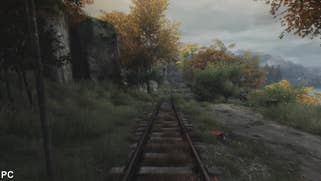

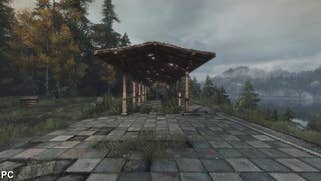
Support for Virtual Reality is also something Adrian Chmielarz, the game's creative director, has talked passionately about exploring. While admitting that VR would require a very "different Ethan Carter", Chmielarz demonstrates a lot of enthusiasm for the idea. It's something he would clearly love to do, and there's the hope that it will result in a spin-off product of some sort. We certainly would love to see a version of the game created for VR, though it's clear that this would likely be impossible to implement on PS4's Morpheus platform without a radical re-think of the existing game.
However, in the here and now, it's difficult not to be impressed with The Astronauts' work on bringing Ethan Carter across to console via its Unreal Engine 4 upgrade. PS4 owners get an excellent version of this haunting adventure game - a strange experience and one well worth diving into if you enjoy a healthy dose of mystery with your exploration. The technical execution is solid and the visual quality is a match for the original PC version, barring some UE4-related changes and less stable anti-aliasing. On top of that, UE4's graphical enhancements are compelling - it's a beautiful game world to lose yourself in.
Perhaps more importantly, this is an important milestone for Epic and Unreal Engine 4. While The Vanishing of Ethan Carter features a somewhat unconventional utilisation of the engine, it's great to finally have an example of a solid, accomplished UE4 title on console. The first bunch of titles we played based on the tech raised concerns about the viability of the engine on PS4 and Xbox One, but it seems that we have turned a corner. With so many future titles designed around the middleware, including Street Fighter V, Fable Legends, Kingdom Hearts 3 and Rime, it's an important step forward for the technology. UE3 dominated last-gen and while there's the sense that its successor isn't quite getting the same level of take-up, it's good to know that the foundations are there for it to hand in exceptional visuals on console hardware.




